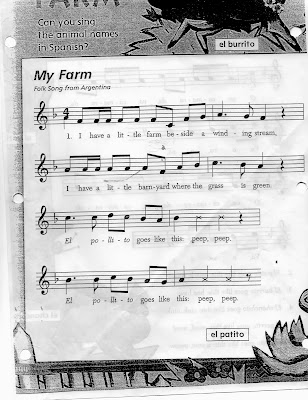Each year, I try new ideas with lessons on mood. This first lesson worked well with first graders, but could be adapted for other grades as well.
After discussing the idea of mood with students, I tell them they will hear a story with "sound words" to create mood. We come up with examples of our own with a specific theme in mind. We learn about rounds, giving the example of Row, Row, Row Your Boat. We sing The Ghost of John and I record them to make singing a round easier. I then read the story Rattlebone Rock by Sylvia Andrews and Jennifer Plecas.
This is a wonderful book with great illustrations as well!
I pick up used soft cover copies whenever I can find them so that students can read along. I usually have one copy start at the end of each row and have the students pass the book after each page turn.
I ask students to repeat the "sound words" after I say them in the book. I use an echo microphone when I teach (all the time) in class. I find them at Walmart or Toys R Us for about two dollars.
After we finish the book, students work in groups to create their own "sound word" poem using the words from the book. We create one together that I display on the board. I tend to erase parts of it after we finish, because many students like to copy exactly what is written.
I give them this template and they are asked to work together to choose words to create their poems.
Once they have finished writing, they read their poems for the class. I like to extend this lesson by asking each group to add instruments to their poem to represent the words of their poem. I usually place a set of instruments on the carpet. I read the poem, students repeat the sounds and then the composers play instruments after each word.
They may also use their voices for things like the BOOS of the ghost. I have heard that other teachers skip the poems and have their students play instruments while the teacher reads the story. I personally enjoy the original poetry and song from the students.
































